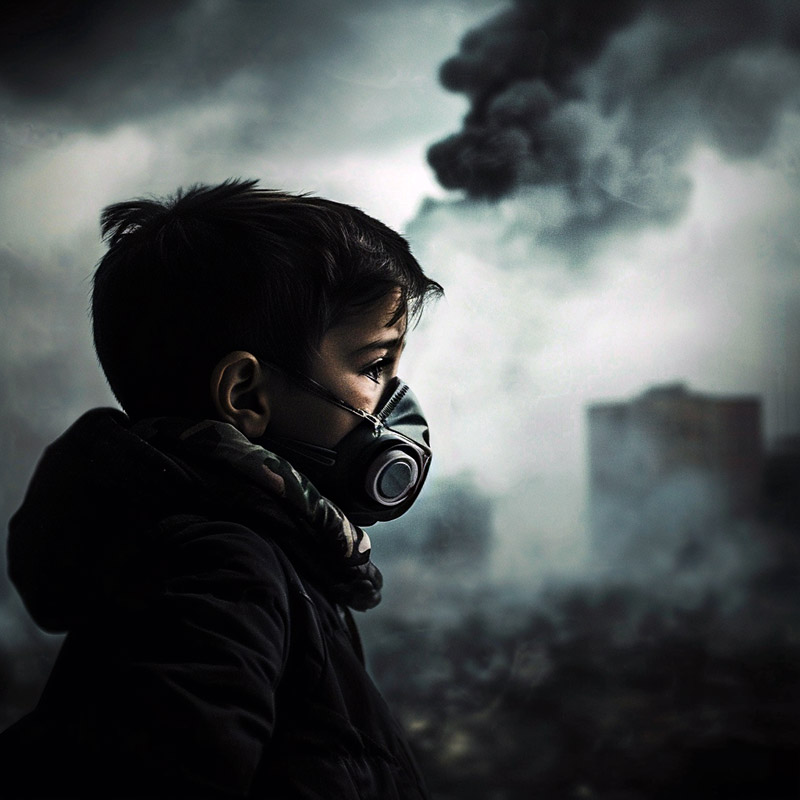
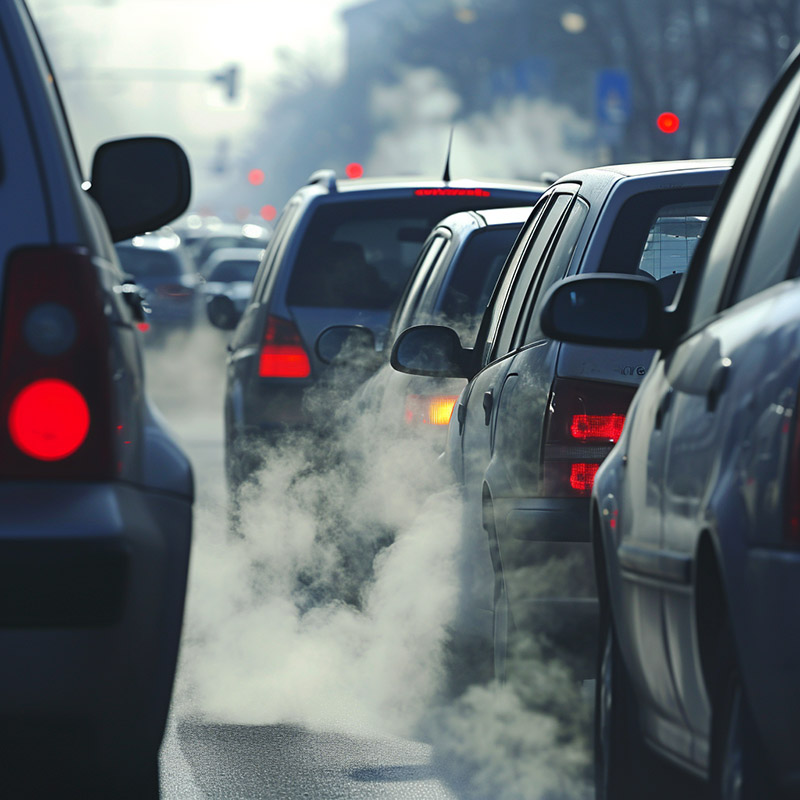
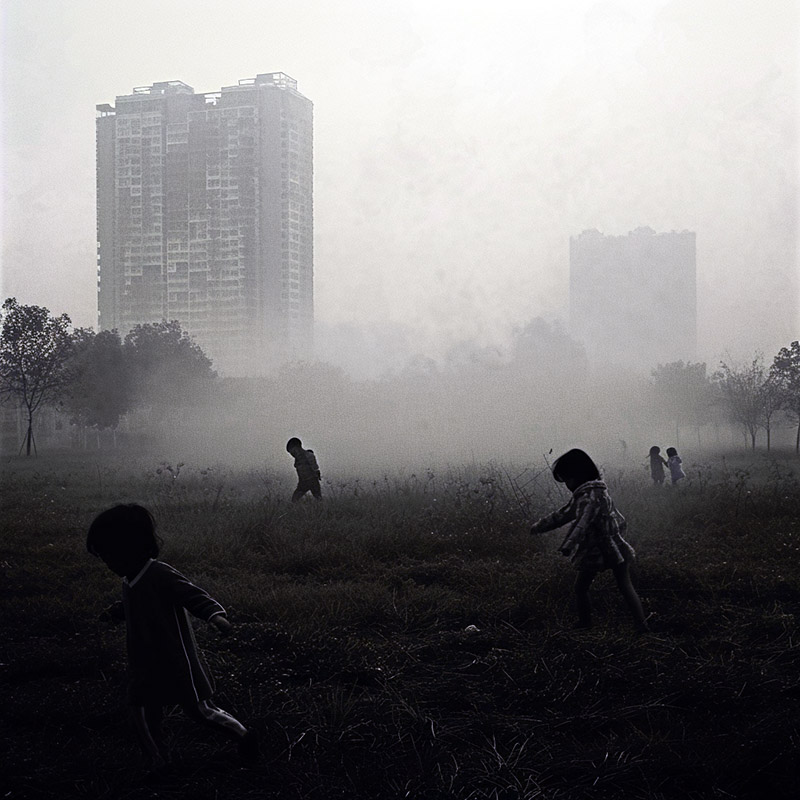
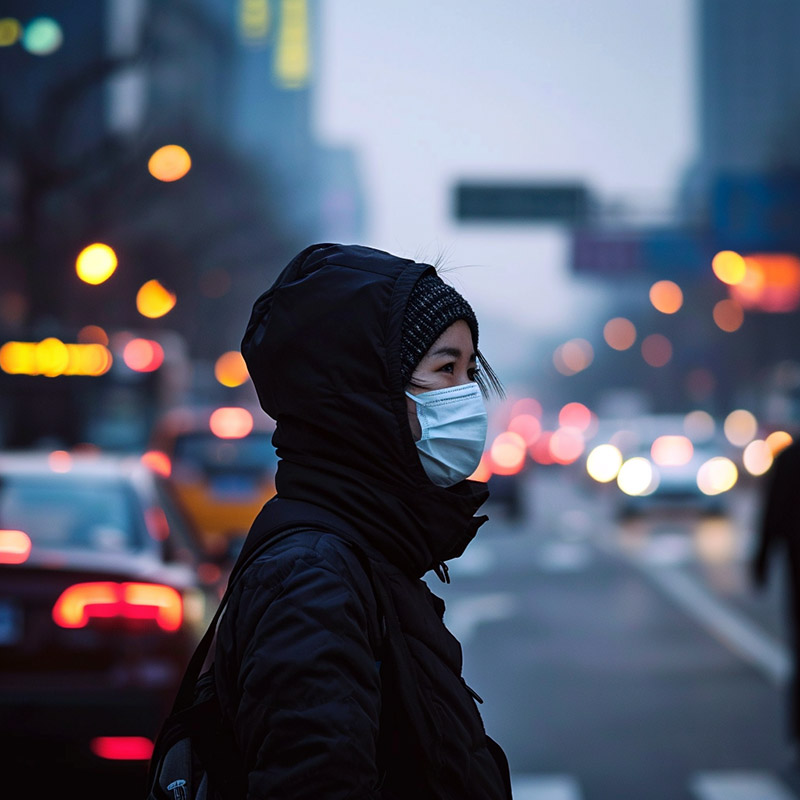
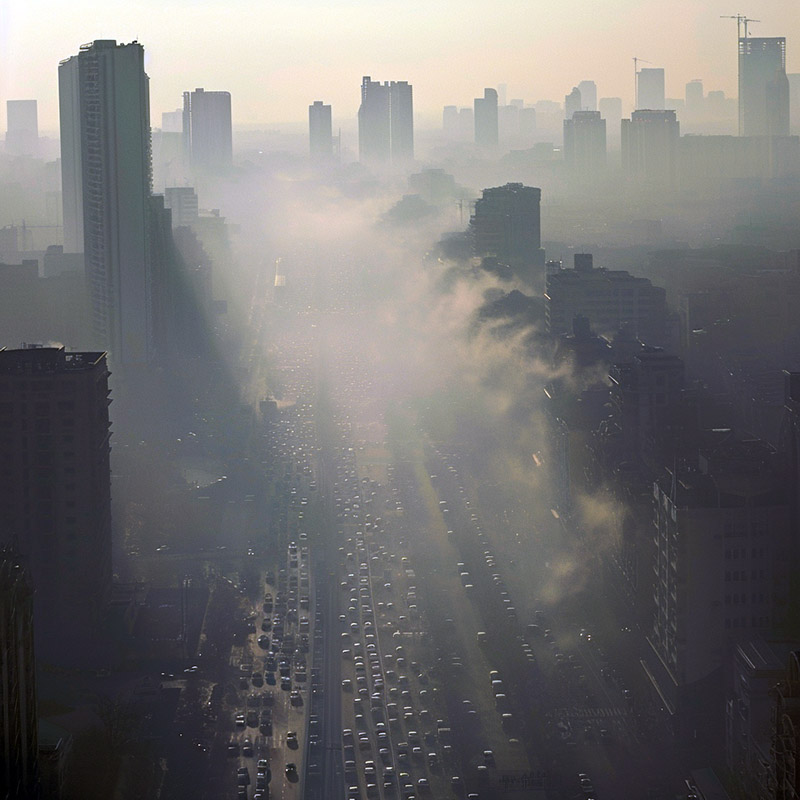
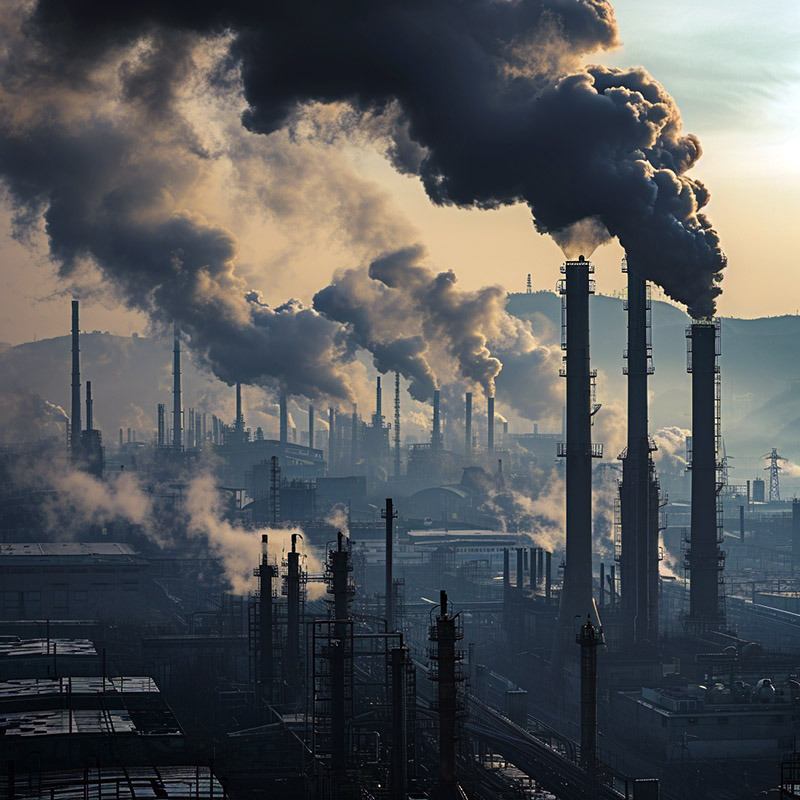
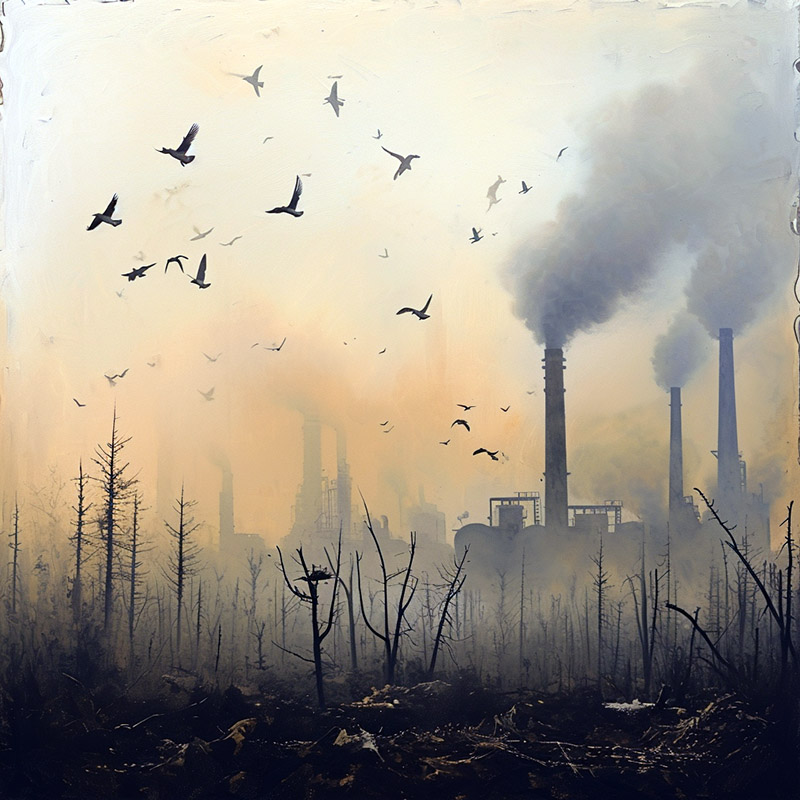


The Great Smoky Mountains National Park Look Rock Tower houses a digital camera which takes high resolution pictures of the view every fifteen minutes. Above are examples of good and bad visibility days.
Air Pollution News
December 11, 2001 - Haze of Asian air pollution crosses the Pacific Ocean and settles over a large swath of North America
Scientists watched closely last spring as a haze of pollution, which had been tracked by satellite as it crossed the Pacific Ocean, settled over a large swath of North America from Calgary, Canada, into Arizona.
Now it appears that, for the first time, researchers on both sides of the Pacific took detailed measurements of the same plume, a cloud that contained Gobi desert dust as well as hydrocarbons from industrial pollution.
Heather Price, a University of Washington doctoral student in chemistry, found that the amount of light reflected by the particles in the air was more than 550 percent greater than normal for that time of year. The mass of Asian air contained elevated levels of all pollutants measured, Price said, "but the only thing that came close to being alarming was the level of particulate matter."
The haze that settled across the western part of the country was widely reported by the news media, and it was measured as far inland as the ski slopes of Aspen, Colorado.
Readings on the western side of the Pacific came from the Aerosol Characterization Experiments, or ACE-Asia, a project aimed at understanding how particles in the atmosphere affect Earth's climate. Additional measurements were taken in the same region at the same time under a project sponsored by the National Aeronautics and Space Administration.
Knowing the pollution was approaching Washington state, Price loaded sensing equipment aboard a rented Beechcraft on April 14 and flew to Neah Bay, on the state's Northwest coast. Taking samples at various levels from 1,500 feet to 20,000 feet in altitude, she monitored quantities of dust, ozone, carbon monoxide and hydrocarbons such as propane, ethane and acetylene.
"From my copilot's seat, the dust was thick enough to see with the naked eye," Price said.
Now she's trying to correlate her findings with those of the two research teams operating on the other side of the Pacific, where at one point the pollution plume was larger than Japan. The huge size of the cloud showed up clearly in satellite images that gave Price plenty of warning the haze was on its way.
"You can see these two blobs coming out of the deserts of Mongolia and growing over Asia, then getting swept out over the ocean and finally settling over North America," she said.
In the dust plume she sampled April 14, levels of carbon monoxide at 18,000 feet altitude were 45 percent greater than typical spring levels.
Price presents her findings in a poster session at the fall meeting of the American Geophysical Union on Thursday (Dec. 13) in San Francisco. Her work is part of a project called the Photochemical Ozone Budget of the Eastern North Pacific Atmosphere, or PHOBEA, headed by Dan Jaffe, an atmospheric scientist at the UW Bothell campus.
In 1998 Jaffe became the first researcher to document that Asian air pollution was crossing the Pacific intact within a few days and affecting air quality in North America. Two years ago he measured a cloud of air from Asia that contained ozone at levels so high it would have violated proposed U.S. clean-air standards.
This year, Price measured hydrocarbon ratios -- comparing the amount of propane to ethane, for example -- to determine how long the plume of air had been in transit from Asia. The ratios change over time, so by examining the chemical signatures she expects to demonstrate that the air she sampled is the same as the plume examined by the researchers working in Asia.
She intends to continue measuring air samples off the Washington coast and will be looking for air masses with evidence of pollution originating somewhere other than Asia.
"We'd like to see if we can get a signature of pollution coming from Europe because computer models suggest that European sources also can be transported across the Pacific," she said. "However, we expect that sources in Europe will contribute less than Asian sources."